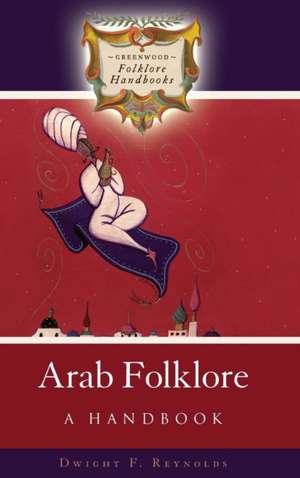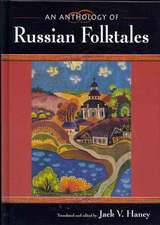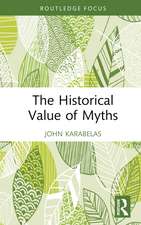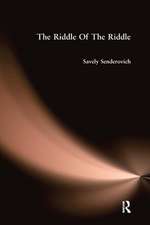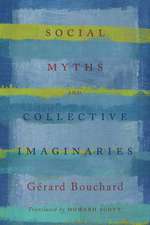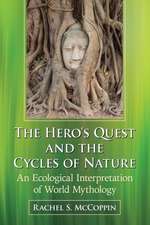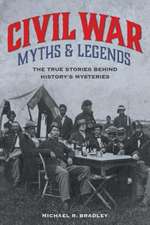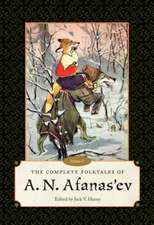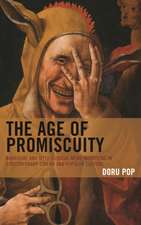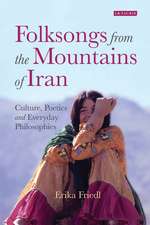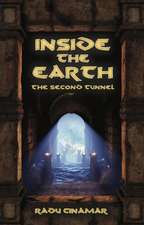Arab Folklore: A Handbook: Greenwood Folklore Handbooks
Autor Dwight Reynoldsen Limba Engleză Hardback – 29 sep 2007 – vârsta până la 17 ani
Din seria Greenwood Folklore Handbooks
- 43%
 Preț: 282.86 lei
Preț: 282.86 lei - 42%
 Preț: 269.87 lei
Preț: 269.87 lei - 42%
 Preț: 226.31 lei
Preț: 226.31 lei - 42%
 Preț: 263.89 lei
Preț: 263.89 lei - 42%
 Preț: 260.67 lei
Preț: 260.67 lei - 42%
 Preț: 259.43 lei
Preț: 259.43 lei - 42%
 Preț: 250.49 lei
Preț: 250.49 lei - 42%
 Preț: 262.27 lei
Preț: 262.27 lei - 42%
 Preț: 254.13 lei
Preț: 254.13 lei - 42%
 Preț: 260.76 lei
Preț: 260.76 lei - 42%
 Preț: 259.52 lei
Preț: 259.52 lei - 42%
 Preț: 259.61 lei
Preț: 259.61 lei - 42%
 Preț: 225.08 lei
Preț: 225.08 lei - 42%
 Preț: 259.61 lei
Preț: 259.61 lei - 42%
 Preț: 259.33 lei
Preț: 259.33 lei
Preț: 261.41 lei
Preț vechi: 451.92 lei
-42% Nou
Puncte Express: 392
Preț estimativ în valută:
50.03€ • 52.04$ • 41.30£
50.03€ • 52.04$ • 41.30£
Carte tipărită la comandă
Livrare economică 14-28 aprilie
Preluare comenzi: 021 569.72.76
Specificații
ISBN-13: 9780313333118
ISBN-10: 0313333114
Pagini: 272
Dimensiuni: 156 x 235 x 27 mm
Greutate: 0.55 kg
Editura: Bloomsbury Publishing
Colecția Greenwood
Seria Greenwood Folklore Handbooks
Locul publicării:New York, United States
ISBN-10: 0313333114
Pagini: 272
Dimensiuni: 156 x 235 x 27 mm
Greutate: 0.55 kg
Editura: Bloomsbury Publishing
Colecția Greenwood
Seria Greenwood Folklore Handbooks
Locul publicării:New York, United States
Notă biografică
Dwight F. Reynolds is Professor of Religious Studies at the University of California, Santa Barbara. His previous books include Interpreting the Self: Autobiography in the Arabic Literary Tradition (2001), and Heroic Poets, Poetic Heroes: The Ethnography of Performance in an Arabic Oral Epic Tradition (1995).
Recenzii
The book could comprise one of a set of texts for a general course on Arab-world culture or for a course on global folklore. The work is prepared for English-speaking students and scholars, and as such is notably effective-among the best in the pantheon of introductory texts for humanities and social science aficionados. . . . Reynolds's clear explications open up for students the opportunity to move forward both in their knowledge of folklore theory and methodology and of the Arab world. Even for advanced undergraduate Arabic majors, the book is an excellent source to work from as they develop a paper focusing on a particular folklore performance or a comparative topic. . . . [I]t is a book that remains on one's bookshelf as a resource long after the course is completed. In a sense it is also timeless, canonical-as important now, if not more so, than when it first appeared in 2007.
This is the first volume in the Greenwood Folklore Handbook series to treat the Middle East, and it is an excellent beginning. Reynolds has considerable experience, having lived in the Middle East and conducted research there, and he provides an introduction to the history and culture of the Arabs and then proceeds, using selective miniature case studies, to survey verbal, musical, and material arts and also customs and traditions from many parts of the Arab world. He offers helpful readings, a review of the scholarship and of approaches to studying folklore, and a section on the importance of context. The examples and illustrations are judicious: they reflect the variety of the folklore, include many translations from the Arabic, and offer balanced coverage of the Muslim, Christian, and Jewish communities. His coverage of the literature is broad and one misses only mention of Ruth Finnegan's Oral Poetry: Its Nature, Significance and Social Context (CH, Mar'78), with its comparative sociological approach and somewhat different slant on the subject. Essential. Lower- and upper-division undergraduates; general readers.
Where Arab Folklore differs from many other handbooks is in the extraordinary geographical, historical, and generic sweep Dwight Reynolds has orchestrated in writing this guide to Arab folklore covering some 20 countries and multiple regional folk cultures..[T]he handbook includes a very rich list of print and electronic references for the topics covered in each chapter, and an extensive bibliography at the end..Dwight Reynold's Arab Folklore should be of interest to a wide range of readers, from students specializing in folklore, to scholars teaching and doing research on the Middle East in various disciplines, to the average reader who simply wants to know more about the Arab world.
In this series for students of folklore and general readers, volumes generally focus on a specific genre, but this volume considers a geographical area encompassing some 20 countries, many with multiple cultures. Reynolds (religious studies, U. of California-Santa Barbara) illustrates representative genres with particular works, and discusses themes that pervade the diversity of modern and historical Arab verbal and narrative arts, musical arts, material arts, and customs and traditions.
This book examines not only the folk narratives of the region but also it's poetry, music, art, customs and traditions. It starts with a brief but detailed overview of the history, religion and people of Arabia. The next section examines Arabia's oral literature, providing many examples of poems and stories, before moving on to look at other aspects of Arabian folklore.
A handful of black-and-white illustrations enhance this thoughtful guide for college-level students of mythography and Arab culture, highly recommended for college library shelves
Arab Folklore differs from other handbooks in its extraordinary geographical and historical coverage of Arab folklore. It encompasses multiple regional folk cultures that span roughly 20 countries and examines not only the folk narratives but also poetry, music, art, customs, and traditions.The discussion is made meaningful through a series of miniature case studies. These aptly illustrate the major themes and genres listed above. They also highlight the importance of performance and context in the Arab world. This approach offers a balanced coverage of the Muslim, Christian, and Jewish communities in the Arab world.The handbook would be invaluable to those specializing in folklore or Middle Eastern studies.
. . . an excellent overview of Arab culture, illuminating the diversity of folk traditions from a rich seedbed comprising some twenty nationalities. . . well organized and logically presented . . . The book is useful for the general public and for students of folklore. . .
This is the first volume in the Greenwood Folklore Handbook series to treat the Middle East, and it is an excellent beginning. Reynolds has considerable experience, having lived in the Middle East and conducted research there, and he provides an introduction to the history and culture of the Arabs and then proceeds, using selective miniature case studies, to survey verbal, musical, and material arts and also customs and traditions from many parts of the Arab world. He offers helpful readings, a review of the scholarship and of approaches to studying folklore, and a section on the importance of context. The examples and illustrations are judicious: they reflect the variety of the folklore, include many translations from the Arabic, and offer balanced coverage of the Muslim, Christian, and Jewish communities. His coverage of the literature is broad and one misses only mention of Ruth Finnegan's Oral Poetry: Its Nature, Significance and Social Context (CH, Mar'78), with its comparative sociological approach and somewhat different slant on the subject. Essential. Lower- and upper-division undergraduates; general readers.
Where Arab Folklore differs from many other handbooks is in the extraordinary geographical, historical, and generic sweep Dwight Reynolds has orchestrated in writing this guide to Arab folklore covering some 20 countries and multiple regional folk cultures..[T]he handbook includes a very rich list of print and electronic references for the topics covered in each chapter, and an extensive bibliography at the end..Dwight Reynold's Arab Folklore should be of interest to a wide range of readers, from students specializing in folklore, to scholars teaching and doing research on the Middle East in various disciplines, to the average reader who simply wants to know more about the Arab world.
In this series for students of folklore and general readers, volumes generally focus on a specific genre, but this volume considers a geographical area encompassing some 20 countries, many with multiple cultures. Reynolds (religious studies, U. of California-Santa Barbara) illustrates representative genres with particular works, and discusses themes that pervade the diversity of modern and historical Arab verbal and narrative arts, musical arts, material arts, and customs and traditions.
This book examines not only the folk narratives of the region but also it's poetry, music, art, customs and traditions. It starts with a brief but detailed overview of the history, religion and people of Arabia. The next section examines Arabia's oral literature, providing many examples of poems and stories, before moving on to look at other aspects of Arabian folklore.
A handful of black-and-white illustrations enhance this thoughtful guide for college-level students of mythography and Arab culture, highly recommended for college library shelves
Arab Folklore differs from other handbooks in its extraordinary geographical and historical coverage of Arab folklore. It encompasses multiple regional folk cultures that span roughly 20 countries and examines not only the folk narratives but also poetry, music, art, customs, and traditions.The discussion is made meaningful through a series of miniature case studies. These aptly illustrate the major themes and genres listed above. They also highlight the importance of performance and context in the Arab world. This approach offers a balanced coverage of the Muslim, Christian, and Jewish communities in the Arab world.The handbook would be invaluable to those specializing in folklore or Middle Eastern studies.
. . . an excellent overview of Arab culture, illuminating the diversity of folk traditions from a rich seedbed comprising some twenty nationalities. . . well organized and logically presented . . . The book is useful for the general public and for students of folklore. . .
